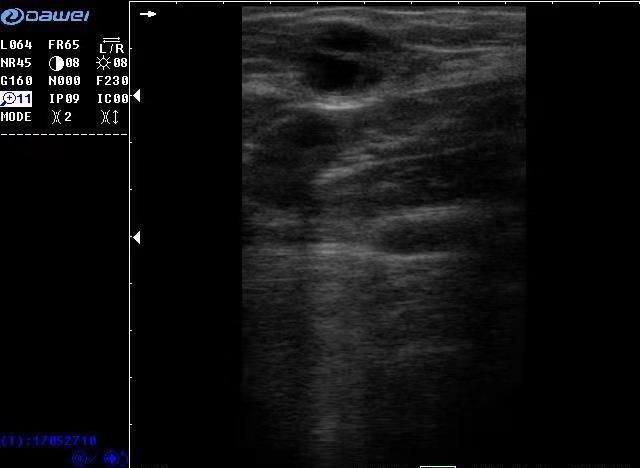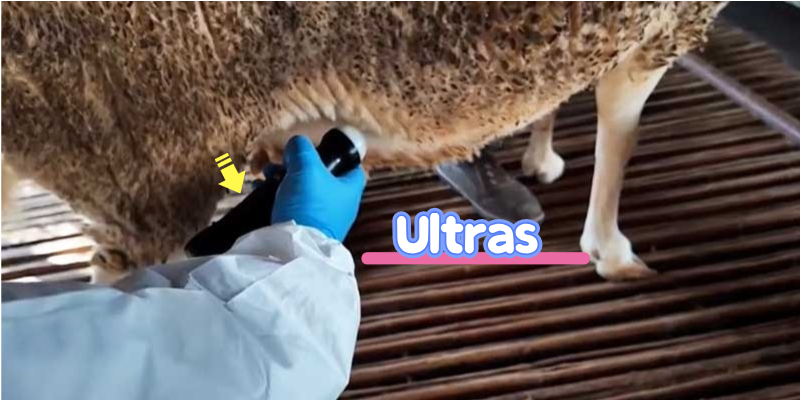In modern sheep farming, where higher reproductive efficiency and economic returns are paramount, Timed Artificial Insemination (TAI) has emerged as a transformative technology. However, its success hinges critically on Precise Synchronization of the ewe’s Estrus Cycle. Relying solely on Hormonal Protocols is akin to “flying blind,” while the integration of Veterinary Ultrasound provides indispensable “visual navigation.” This synergy significantly boosts Conception Rates.
Hormonal Protocols: The Foundation (But Not the Full Solution)
Standard TAI protocols utilize progestogens (sponges or CIDRs) combined with gonadotropins (e.g., PMSG/GnRH) to synchronize Follicular Development and Ovulation. The goal is for the ewes to exhibit estrus and ovulate collectively at a predetermined time, facilitating efficient Artificial Insemination (AI).
Veterinary Ultrasound: The Key to Precision
Dependence on hormonal timetables alone carries risks due to individual variation. Sheep Ultrasound Examination, enabling real-time visualization of the Reproductive Tract structures, delivers indispensable precision to TAI programs:
Assessing Ovarian Response & Synchronization Efficacy:
Performing Ovarian Ultrasound Scanning near the end or before withdrawal of hormonal treatment allows direct observation of Ovarian Follicles – their size, number, and developmental stage.
Identification of active Corpus Luteum (CL) presence (which can impact protocol effectiveness).
Critical Role: Confirms if the ewe group has reached the ideal, uniform stage of follicular development and evaluates the actual effectiveness of the current Hormonal Synchronization Protocol. If group response is suboptimal, adjustments to the protocol or AI timing can be made promptly, avoiding ineffective procedures.
Accurately Determining Insemination Timing:
Monitoring the maturity of target follicles (typically >5mm) and signs of impending ovulation.
Critical Role: Provides the most direct basis for Optimizing AI Timing based on actual follicular dynamics rather than solely preset schedules. Research consistently shows that ultrasound-guided AI significantly improves conception rates compared to fixed-time AI.
Early Pregnancy Diagnosis & Protocol Refinement:
Reliable Early Pregnancy Diagnosis via Transrectal or Transabdominal Ultrasound can be performed as early as 25-30 days post-TAI, accurately identifying non-pregnant (open) ewes.
Critical Role: Enables rapid re-breeding management of open ewes, shortening lambing intervals – a crucial advantage in regions with compressed breeding seasons like Canada, where swift winter management decisions depend on early pregnancy confirmation. Furthermore, collecting conception rate data is fundamental for evaluating and Refining Synchronization & Insemination Protocols.
Global Adoption: Precision Driving Results
The strategic integration of ultrasound into TAI protocols delivers tangible benefits recognized worldwide:
Optimizing High-Value Genetics: In extensive operations like Australia’s vast Merino stations, ultrasound-guided TAI maximizes ROI on premium frozen semen by ensuring precise insemination timing, directly enhancing genetic dissemination efficiency.
Conquering Climatic Constraints: Canadian producers leverage ultrasound’s rapid pregnancy diagnosis to navigate short breeding windows and harsh winters, enabling data-driven culling and feeding strategies within tight seasonal limits.
Accelerating Genetic Progress: Driven by efficiency, US meat and dairy sheep systems increasingly adopt ultrasound-monitored TAI as a core strategy to shorten generation intervals and intensify genetic gain.
Welfare-Centric Efficiency: Reflecting Europe’s (notably Germany) emphasis on precision livestock farming, ultrasound minimizes ewe handling by pinpointing the exact physiological moment for insemination, aligning high conception rates with ethical management practices.
Choosing Reliable Tools: Dawei Veterinary Ultrasound Empowers Efficient Sheep Reproduction
The demands on Sheep Reproductive Ultrasound equipment for TAI programs are high – requiring exceptional image clarity, probe sensitivity, and operational ease. Dawei Veterinary Ultrasound is engineered for the farm environment:
High-Resolution Imaging: Delivers clear visualization of ovarian structures, follicular details, and early pregnancy sacs (>25 days), providing a reliable basis for precise decision-making.
Sheep-Specific Probes: Offers Linear or Microconvex Probes optimized for transrectal or transabdominal scanning, ensuring superior contact and image quality.
Rugged & Portable: Built for durability and ease of use by vets and technicians in variable field conditions, enhancing On-farm Diagnostics efficiency.
User-Friendly Design: Intuitive interface and ergonomic features streamline Sheep Fertility Checks, making examinations faster and more efficient.
Conclusion: Synergy Drives Success
Integrating Veterinary Ultrasound Monitoring into sheep Timed Artificial Insemination (TAI) Programs is not an extra step; it is the scientific guarantee for achieving Precise Estrus Synchronization and maximizing Conception Rates. It transforms hormonal protocols from “estimation” to “visualization,” moving from a “population overview” to “individual precision.” This significantly reduces breeding costs while accelerating flock genetic progress and overall profitability. Investing in reliable Sheep Ultrasound Technology, such as Dawei Veterinary Ultrasound, is the intelligent choice for modern, high-efficiency sheep breeding management.
Explore Dawei Veterinary Ultrasound Solutions now and inject precision into your sheep TAI program to achieve significantly enhanced reproductive outcomes!
Post time: Jun-03-2025





